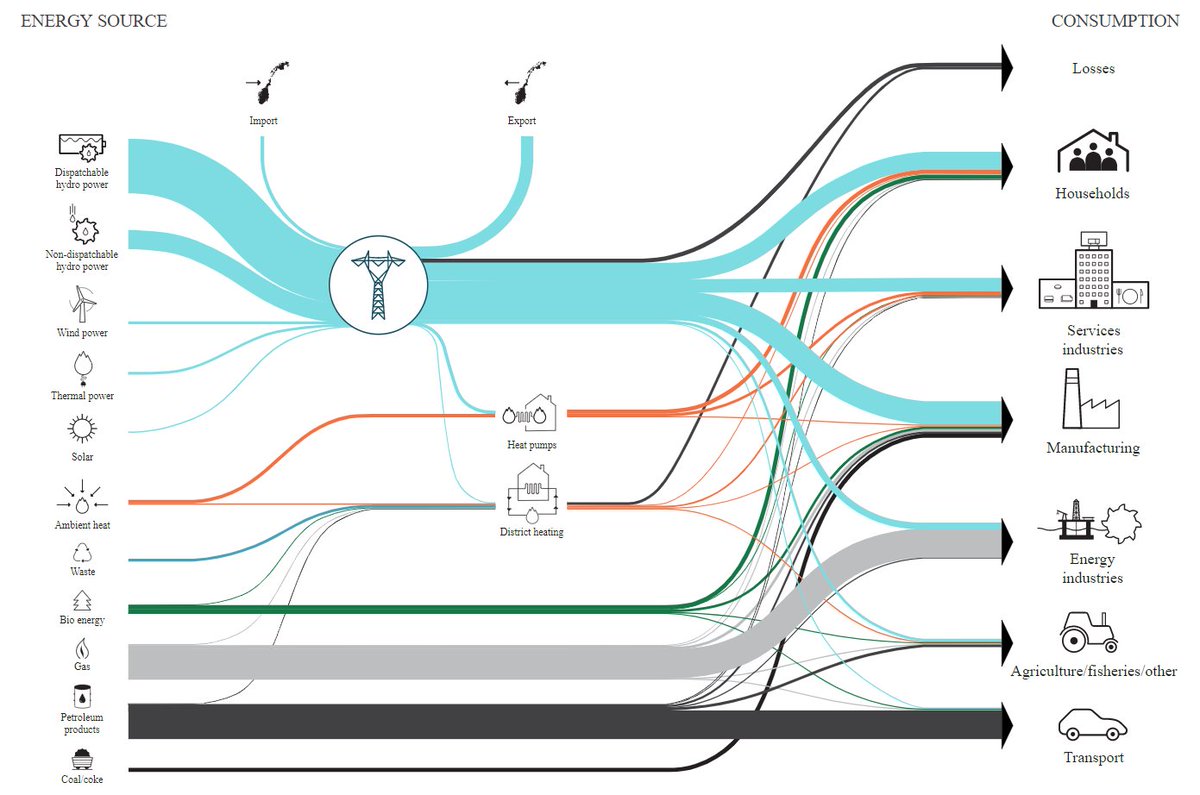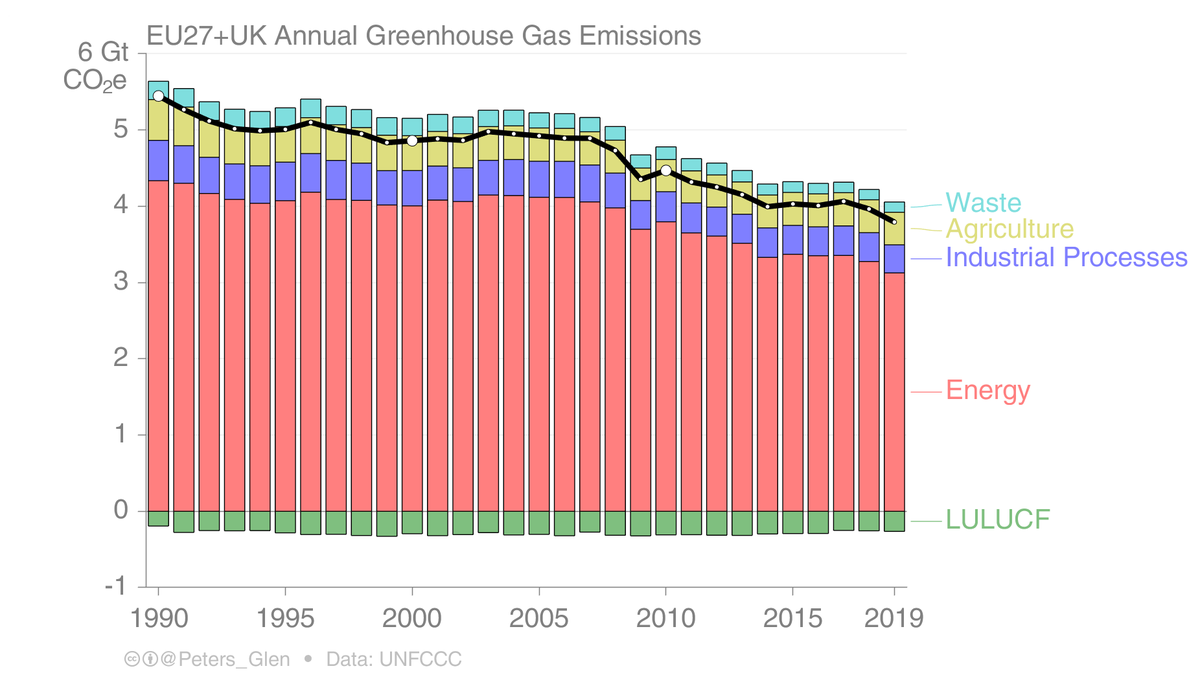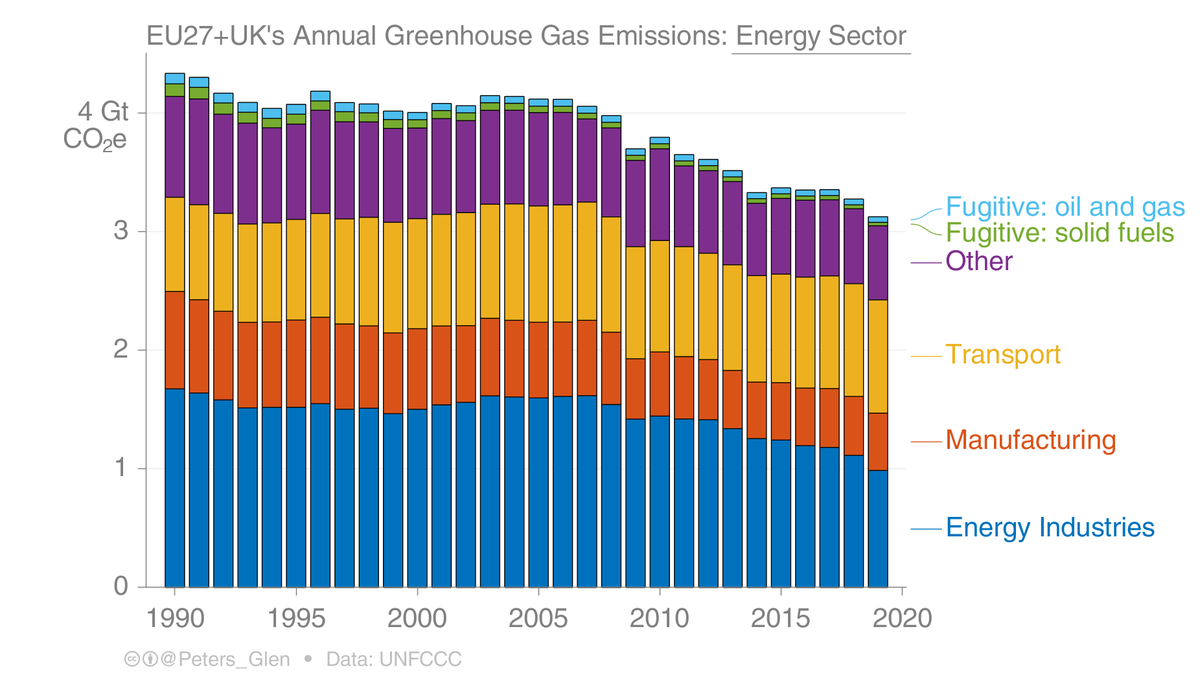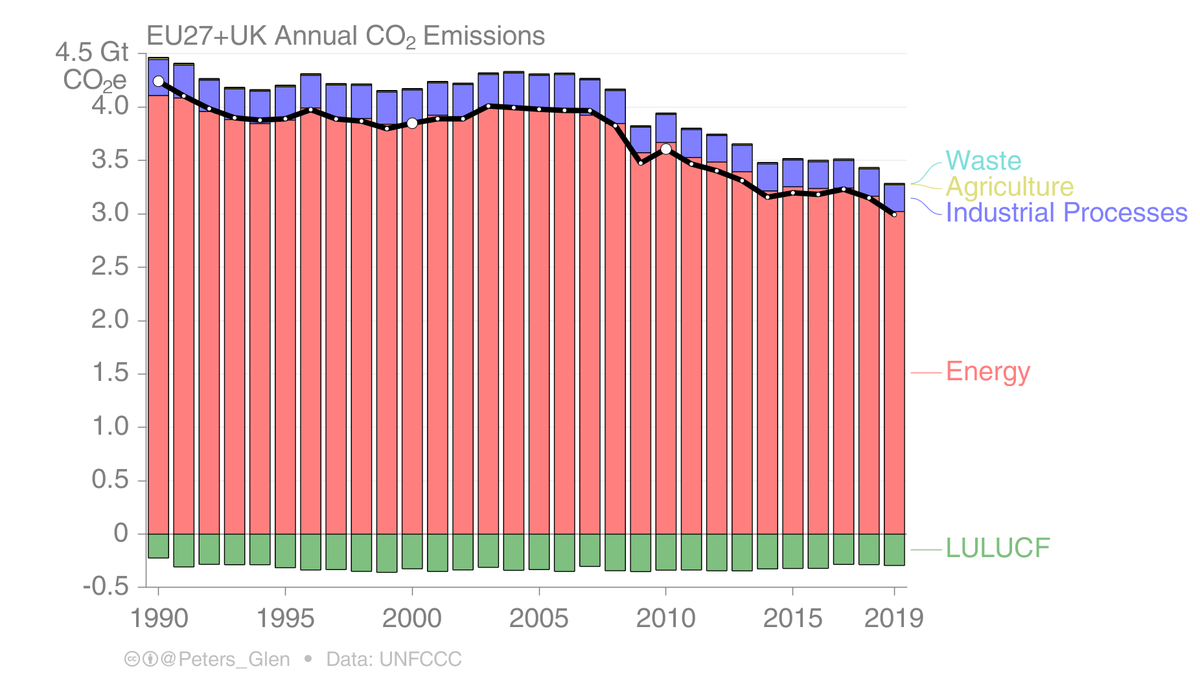
Norwegian electricity production is dominated by hydropower, & overall Norway is a net exporter of electricity (though, this varies throughout the year).
Hydropower production varies due to weather (green), but consumption is relatively constant (black line).
1/
Hydropower production varies due to weather (green), but consumption is relatively constant (black line).
1/

Total energy consumption is dominated by hydropower (figure shows generation, not consumption).
Nearly all the oil is used in transport, and nearly all the gas is used in oil & gas extraction.
Norway is already quite electrified...
2/
Nearly all the oil is used in transport, and nearly all the gas is used in oil & gas extraction.
Norway is already quite electrified...
2/

The energy flow is dominated by electricity (hydropower, split between dispatchable & non-dispatchable).
As time passes, this figure will become even more dominated by electricity. Current policy is to electrify transport & oil & gas production...
energifaktanorge.no/en/energy-fact…
3/
As time passes, this figure will become even more dominated by electricity. Current policy is to electrify transport & oil & gas production...
energifaktanorge.no/en/energy-fact…
3/

For completeness, here is the net electricity consumption, including losses & statistical differences. (Just because I made the figure).
Electricity data from SSB: ssb.no/en/energi-og-i…
4/4
Electricity data from SSB: ssb.no/en/energi-og-i…
4/4

• • •
Missing some Tweet in this thread? You can try to
force a refresh

















